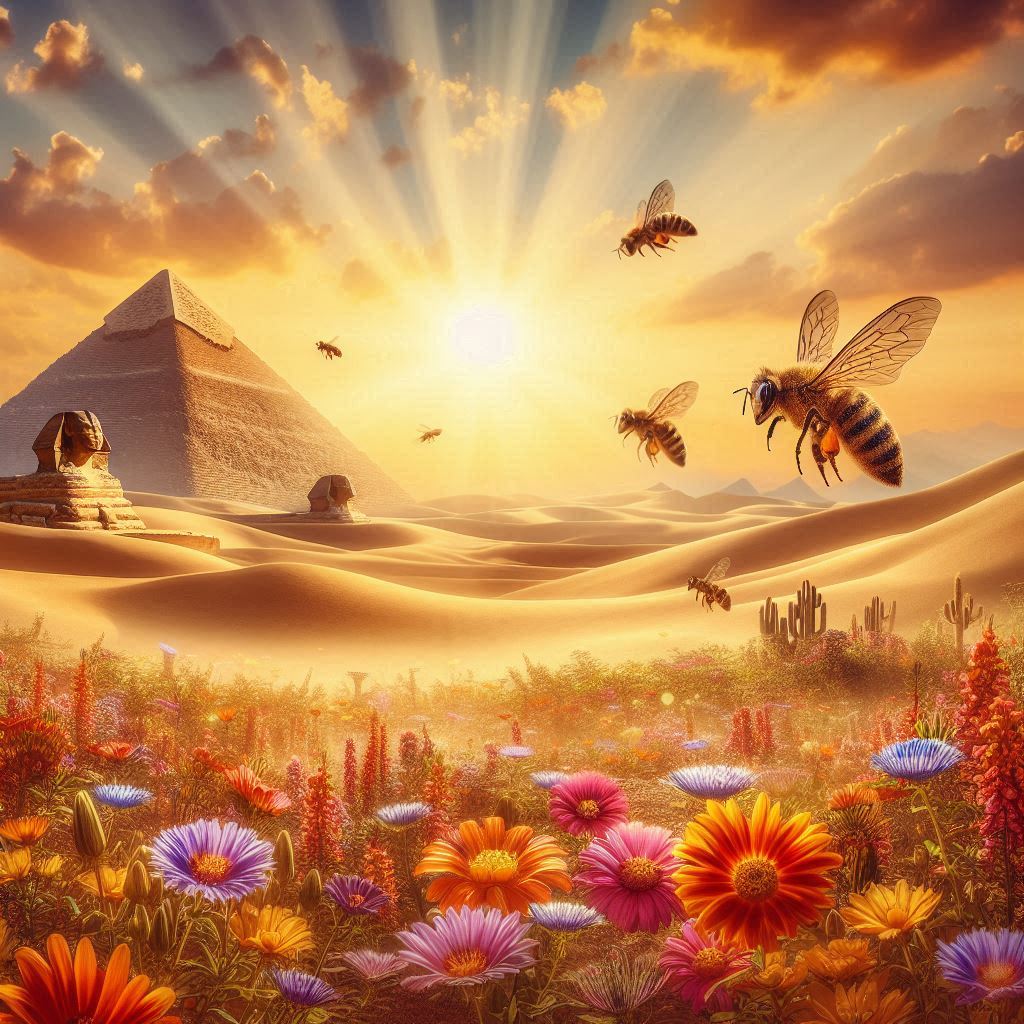Honeybees have captivated human imagination for millennia, weaving their golden thread through mythology, agriculture, religion, and science. Their importance to ecosystems and economies is matched by their rich symbolic presence in diverse cultures. This post explores the fascinating history of honeybees, tracing their evolution, domestication, and cultural significance across civilizations.
1. Origins and Natural History
Honeybees (genus Apis) are believed to have originated in Southeast Asia over 30 million years ago. Fossil records, including ancient bee specimens preserved in amber, indicate their existence alongside early flowering plants. The modern Western honeybee (Apis mellifera) likely evolved in Africa before spreading into Europe and Asia.
Honeybees are social insects, living in complex colonies with highly organized structures. Their ability to produce surplus honey and wax, coupled with their pollination services, has made them invaluable to both nature and humans.
2. Honeybees in Ancient Civilizations
Ancient Egypt
Egyptians revered the honeybee as a symbol of royalty and order. The bee was an emblem for Lower Egypt and appeared in the royal cartouches of pharaohs. Egyptians were among the earliest beekeepers, as depicted in tomb paintings from around 2400 BCE showing hives and honey extraction. Honey was prized for its sweetness, medicinal properties, and use in religious offerings. Beeswax, too, was used for embalming and in cosmetics.
Mesopotamia and the Fertile Crescent
Textual evidence from Sumer and Babylon suggests honey and beeswax were valuable commodities, though wild honey hunting seemed more common than managed beekeeping. Honey was used in rituals, cuisine, and medicine.
Ancient Greece and Rome
Greeks considered bees sacred to Artemis, Demeter, and other deities. The priestesses of Demeter, called “Melissae” (bees), reflected the bee’s association with purity and connection to the divine. Aristotle’s observations on bees in the 4th century BCE laid the groundwork for apiculture science. The Romans advanced beekeeping techniques and considered honey both a luxury and a staple, using it as a sweetener, preservative, and ingredient in mead.
3. Honeybees in Asian Cultures
India
References to honey and bees appear in the Vedas, ancient Hindu scriptures dating back to 1500 BCE. Honey was one of the five elixirs of immortality (Panchamrita) and played a role in Ayurvedic medicine. Traditional Indian beekeeping involved indigenous species like Apis cerana and Apis dorsata.
China
Chinese records from around 2000 BCE mention honey in medicine and food. Traditional beekeeping in China differed from Western methods, often involving the capture and management of wild bee colonies in logs or clay pots. Honey and beeswax were integral to Chinese herbal medicine and ceremonies.
4. Honeybees in Africa
In Africa, honeybees have long been an essential part of rural life. Indigenous peoples practiced honey hunting and later developed beekeeping techniques suited to local bee species. Honey featured in rituals, as a food source, and as a trade commodity. In Ethiopia, for instance, honey is used to make tej, a traditional honey wine, and bees hold symbolic status in folklore.
5. Honeybees in Indigenous and Pre-Columbian Americas
While the Western honeybee was introduced to the Americas by European colonists in the 1600s, native stingless bees had been managed by Indigenous peoples for centuries. The Maya of Central America cultivated stingless bees (Melipona beecheii), considering honey sacred and essential for religious rituals, medicine, and trade.
6. The Middle Ages to Modern Era
Medieval Europeans advanced hive design and honeybee management, with monasteries becoming centers of beekeeping. Beeswax was crucial for church candles, symbolizing purity and divinity. In the Renaissance and Enlightenment, scientific curiosity led to breakthroughs in understanding bee biology, such as the recognition of the queen bee’s central role.
The 19th century saw the invention of the movable-frame hive by Lorenzo Langstroth, revolutionizing apiculture by allowing for non-destructive honey harvests and better colony management. This innovation, along with global bee transport, cemented honeybees’ role in industrial agriculture.
7. Symbolism and Mythology
Across cultures, honeybees have symbolized:
- Industry and diligence (Ancient Greece, Victorian England)
- Purity and resurrection (Christian Europe)
- Immortality and the soul (Egypt, India)
- Community and cooperation (many cultures)
Bees appear in heraldry, literature, and religious texts, often as models for human society or divine order.
8. Challenges and Conservation
Today, honeybees are vital pollinators for food crops, but face threats from habitat loss, pesticides, disease, and climate change. The decline of bee populations has spurred global conservation efforts and a renewed appreciation for the ancient bond between humans and honeybees.
Conclusion
From prehistoric foragers to modern farmers, humanity’s relationship with honeybees is a testament to their enduring importance. Revered, studied, and cherished, honeybees continue to inspire—and remind us of the delicate balance between culture, nature, and survival.

